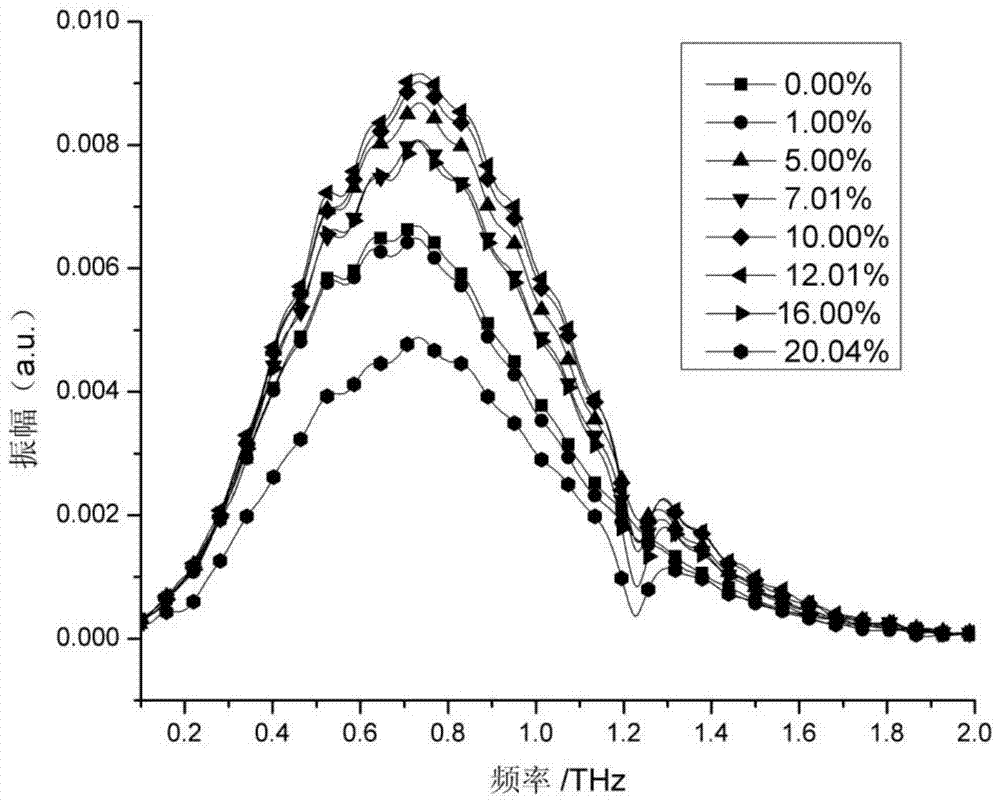Method for detecting amino acid content in grains using terahertz frequency domain spectroscopy
A spectral technology and terahertz time-domain technology, applied in the field of food component detection, can solve problems such as impenetrability, weak absorption intensity, and spectral peak width, and achieve unbiased evaluation, avoid errors, and have the effect of analyzing results
- Summary
- Abstract
- Description
- Claims
- Application Information
AI Technical Summary
Problems solved by technology
Method used
Image
Examples
Embodiment
[0038] This embodiment provides a method for detecting the content of L-glutamic acid in grains using terahertz frequency domain spectroscopy. Wherein, after adding known amount of L-glutamic acid (purchased from Sigma Company) to rice powder (provided by Zhangjiakou City Inspection and Quarantine Bureau, Hebei Province), the grain samples to be tested with different L-glutamic acid concentrations were prepared, and the The grain sample to be tested adopts the method of the present invention to detect and analyze as a blind sample, and the specific steps are as follows:
[0039] (1) Put the rice into a pulverizer to pulverize it, sieve it after grinding (100 mesh, particle size≤150 μm), put it into an oven and dry it to obtain dry rice powder; mix the rice powder with L-glutamic acid The powders are mixed according to different mass ratios, transferred to an agate mortar and further ground to obtain the fine powder of the mixed sample to be tested, wherein the mass percentage ...
PUM
| Property | Measurement | Unit |
|---|---|---|
| diameter | aaaaa | aaaaa |
| thickness | aaaaa | aaaaa |
Abstract
Description
Claims
Application Information
 Login to View More
Login to View More - R&D
- Intellectual Property
- Life Sciences
- Materials
- Tech Scout
- Unparalleled Data Quality
- Higher Quality Content
- 60% Fewer Hallucinations
Browse by: Latest US Patents, China's latest patents, Technical Efficacy Thesaurus, Application Domain, Technology Topic, Popular Technical Reports.
© 2025 PatSnap. All rights reserved.Legal|Privacy policy|Modern Slavery Act Transparency Statement|Sitemap|About US| Contact US: help@patsnap.com



